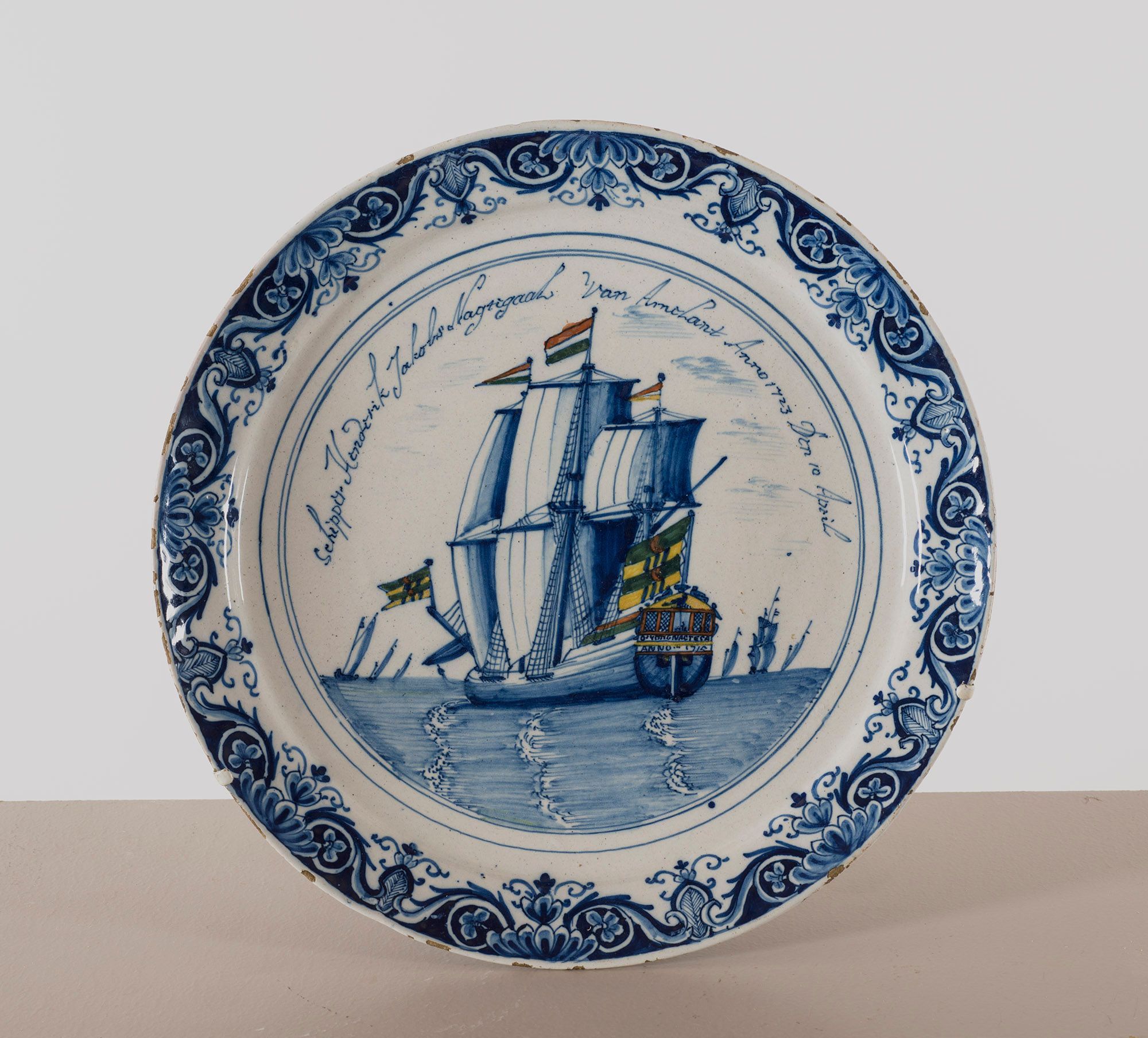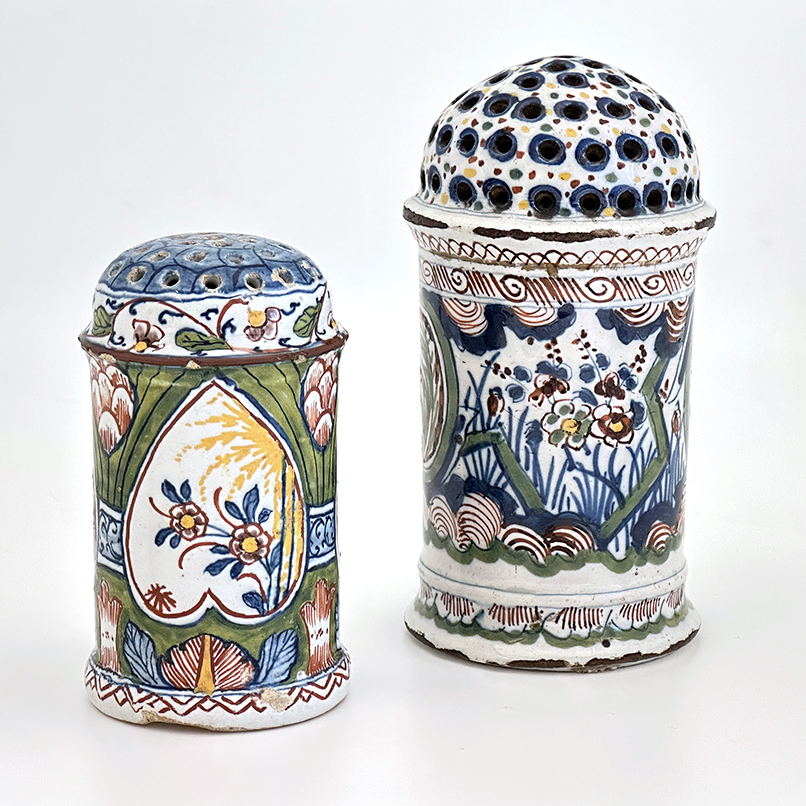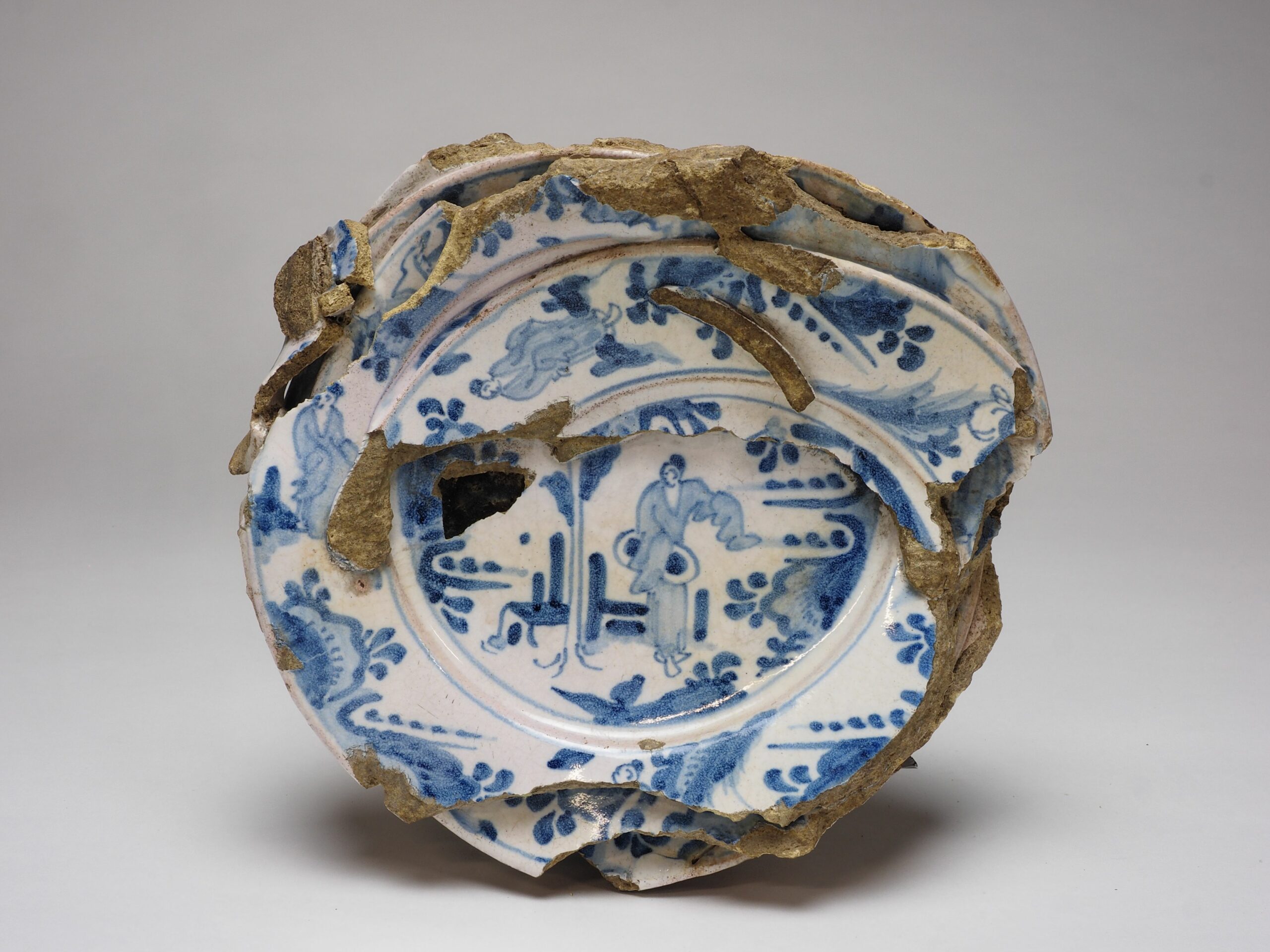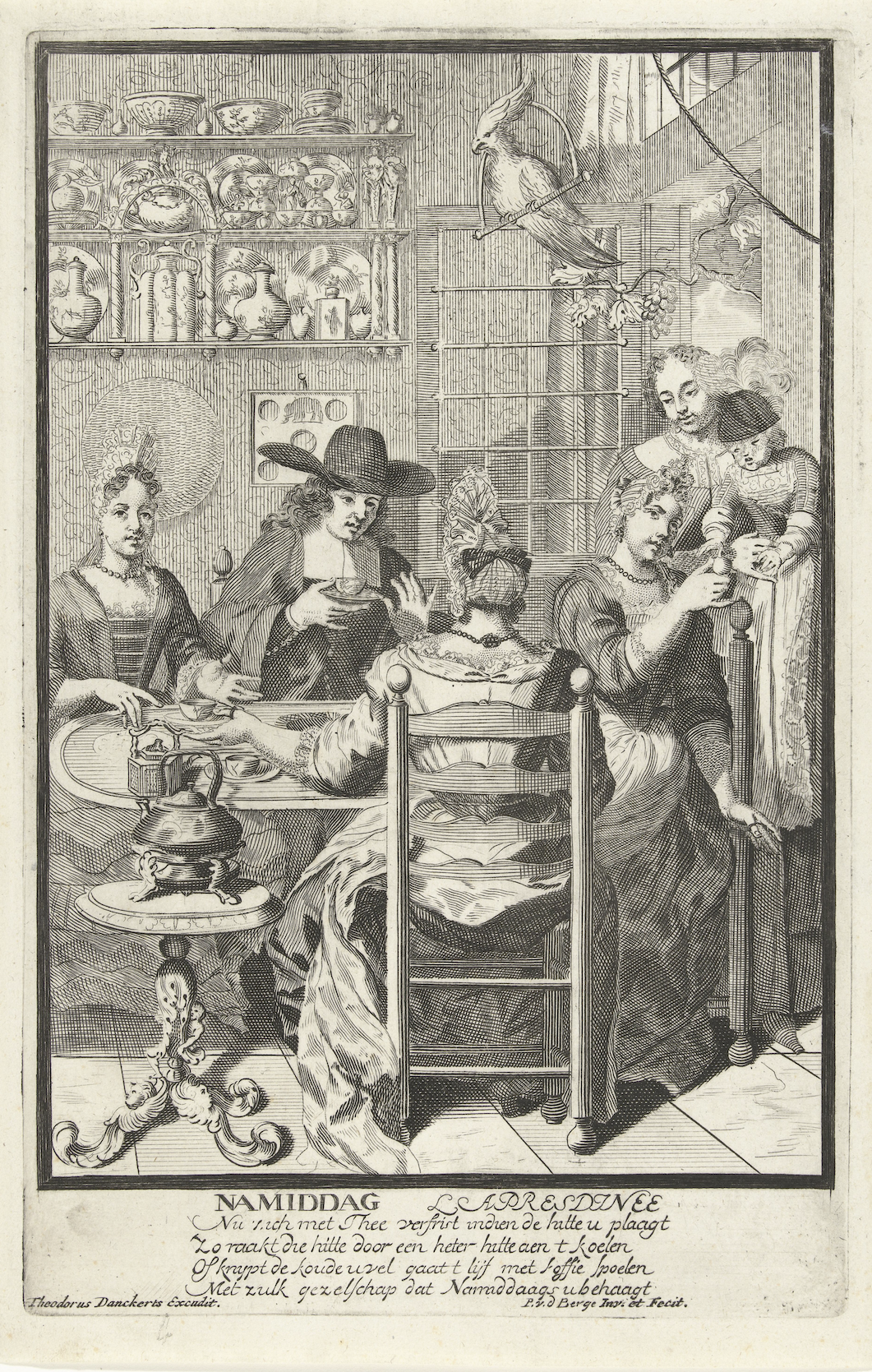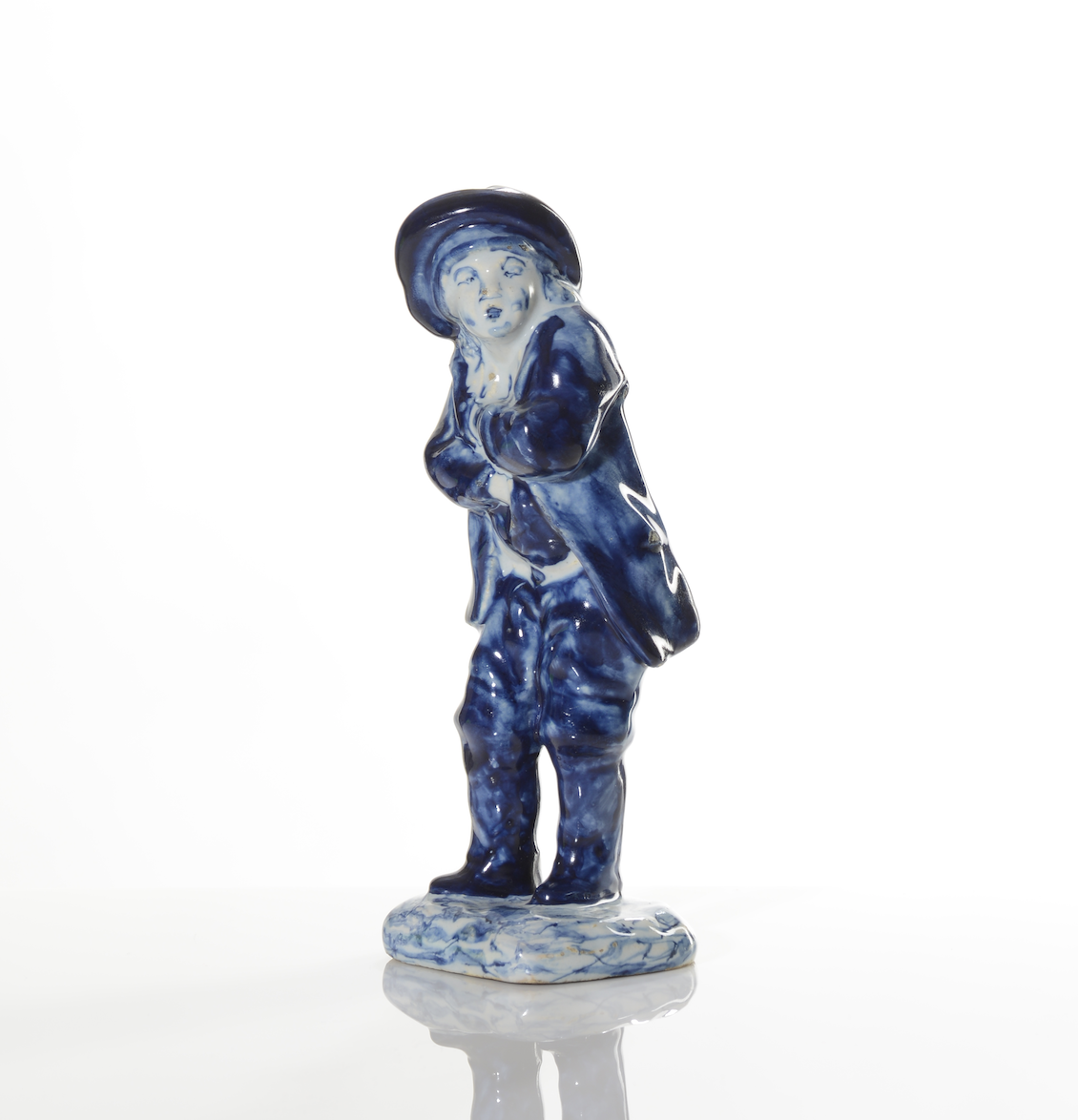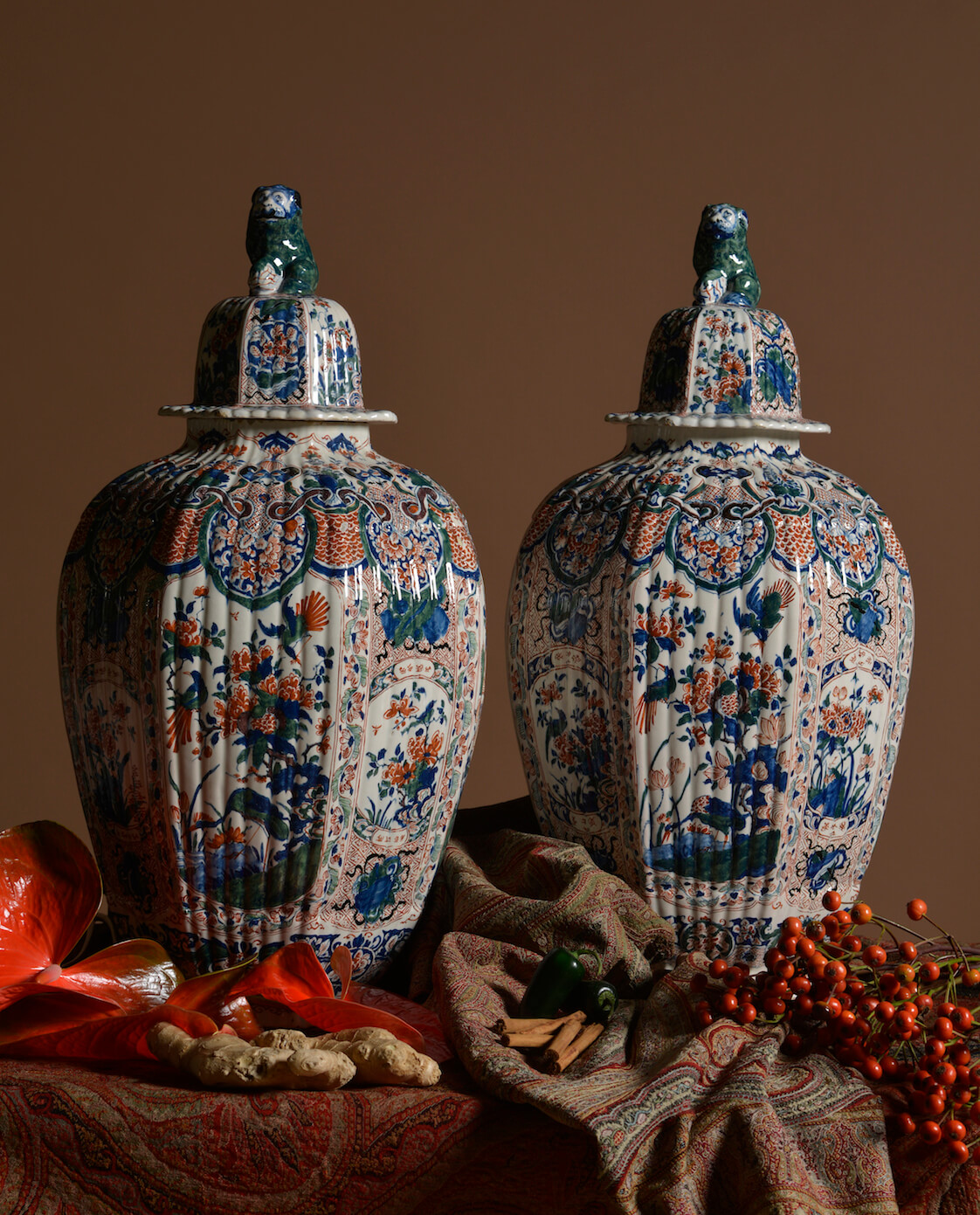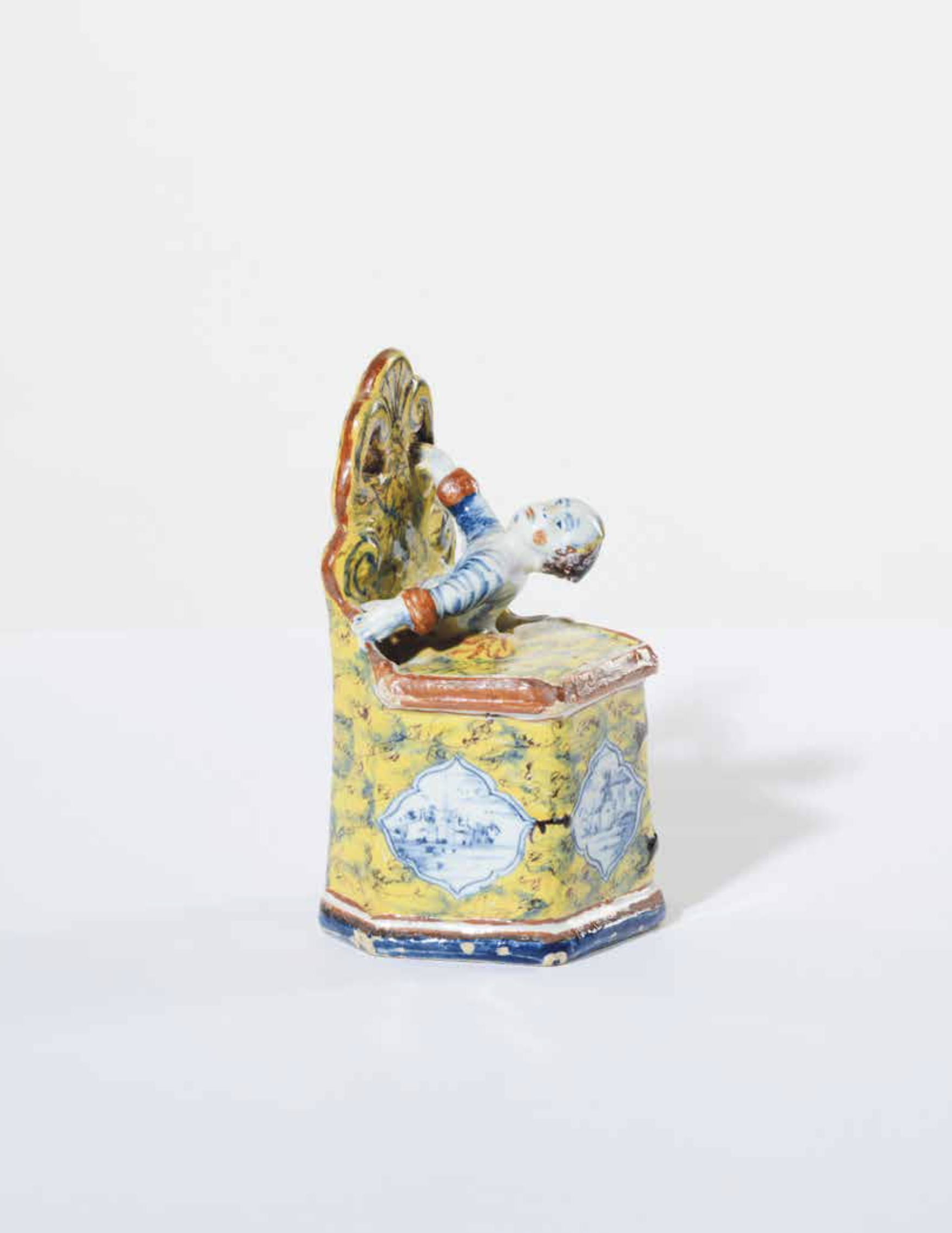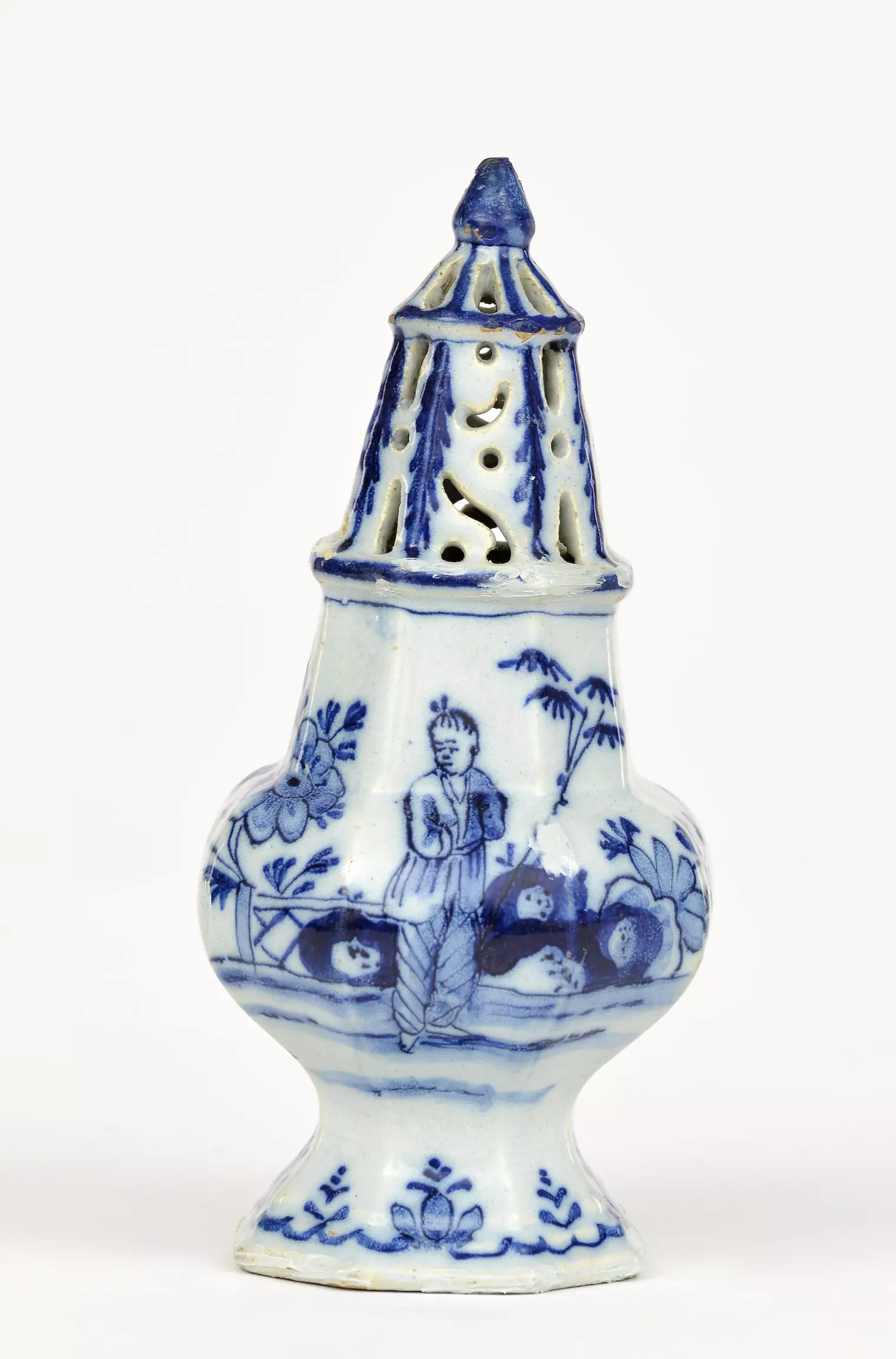The Young Nightingale
In 1723 The Greek A Factory (De Grieksche A) made at least three plates depicting the ship De Jonge Nagtegaal (The Young Nightingale— nightingale being the translation of the Nagtegaal family’s name), two inscribed “schipper Henderik Jacobs Nagtegaal van Amelant Anno 1723 D 10 April” and one where Jacobs is spelled Jakos.1 The ship flies…

